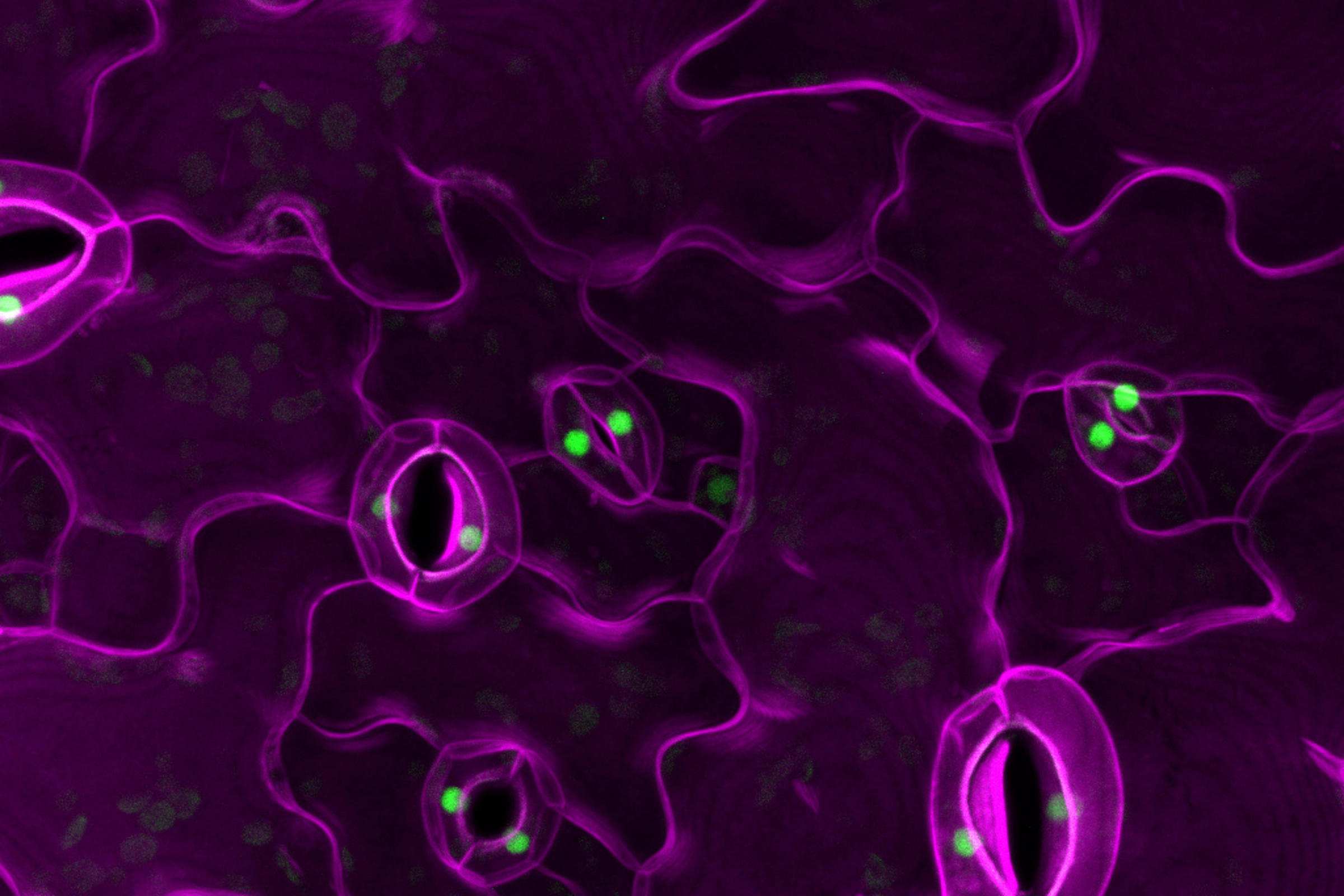Plastic-eating Enzyme Could Eliminate Billions of Tons of Landfill Waste
An enzyme variant created by engineers and scientists at The University of Texas at Austin can break down environment-throttling plastics that typically take centuries to degrade in just a matter of hours to days.
This discovery, published today in Nature, could help solve one of the world's most pressing environmental problems: what to do with the billions of tons of plastic waste piling up in landfills and polluting our natural lands and water. The enzyme has the potential to supercharge recycling on a large scale that would allow major industries to reduce their environmental impact by recovering and reusing plastics at the molecular level.
The project focuses on polyethylene terephthalate (PET), a significant polymer found in most consumer packaging, including cookie containers, soda bottles, fruit and salad packaging, and certain fibers and textiles. It makes up 12% of all global waste.
Hal Alper in the Cockrell School of Engineering's Department of Chemical Engineering and Andrew Ellington in the Department of Molecular Biosciences in the College of Natural Sciences teamed up for the research. Danny Diaz, a graduate student in Ellington's lab developed a new machine learning platform called MutCompute that can predict which mutations in plastic-degrading enzymes would accomplish the goal of quickly depolymerizing post-consumer waste plastic at low temperatures. The result: FAST-PETase (functional, active, stable and tolerant PETase).
"This work really demonstrates the power of bringing together different disciplines, from synthetic biology to chemical engineering to artificial intelligence," said Ellington, professor in the Center for Systems and Synthetic Biology whose team led the development of the machine learning model.
Read more about this work in the UT News press release.
For more on the possible impacts of this work, read the following essay by Ellington.
The Circular Plastics Economy
By Andrew Ellington
The recent work from The University of Texas at Austin on developing enzymes that can routinely degrade plastic packaging within days is the first foray into a much wider world, where materials such as plastics are not seen as pollution, but rather as valuable raw materials for so-called upcycling.
In geological and evolutionary timescales, many of the products in the world around us have been relatively recently transformed from the raw materials of the Earth. But Nature is catching up quickly. For example, the first nylon polymers on Earth showed up in the 1930s — and were shortly followed by bacteria that could eat nylon. Similarly, the enzyme that can eat the plastic polyethylene terephthalate (or the more pronunciation-friendly abbreviation 'PET') was discovered just a few years ago in the bacteria Ideonella sakaiensis, which had learned to grow on this plastic. PET's inception as a mainstay of water bottles and other products has led to the inexorable evolution of organisms that thought PET looked pretty yummy.
But while evolution gives a great starting point for biotechnology, human engineering can vastly accelerate the processes we need to clean up plastic waste. In the current instance, a machine-learning tool, dubbed MutCompute, developed by graduate student Danny Diaz, was able to pick out on its own positions in the PET-eating enzyme (or PETase) that could be mutated to improve its stability and its function. This in turn led to the ability to incubate plastics with the PETase at higher temperatures, leading to overall faster degradation.
Work is now underway to apply this combination of biomining, directed evolution and human engineering to other plastics, paving the way to being able to reduce much of the pollution seen in landfills and beaches to its component parts. As we make plastics into bacteria (and therefore potentially compost and fertilizer), what else could the bacteria do?
Well, the remarkable capabilities of synthetic biology can be tasked not only with breaking things down, but building them up. In this regard, the same monomers that built the plastics in the first place, chemically, can be rebuilt, in new and different (and often better) forms, via biochemistry! To that end, researchers are working on turning plastic waste into a cornucopia of products.
While the transformations available via biochemical engineering are at least as diverse and interesting as those of traditional chemical engineering, scalability remains an issue. There's just a difference between making tons of something with chemical plants, and tons of something with bacterial fermentations. It's certainly possible, but it's an entirely different infrastructure. Fortunately, there are major efforts underway to build out that infrastructure, across the United States, in part via the Department of Defense-sponsored Manufacturing Innovation Institute known as BioMade.
Into the longer term, as the bioeconomy continues to expand and begins to not just recycle but 'upcycle' plastics, the development of local and regional industries that are nearest to a ready carbon source (plastic waste on the coastlines; switchgrass in Texas prairies; corn in Iowa) will in turn yield new sources of funding and jobs. Growth following source will be similar to what we see for petroleum today (offshore platforms in the Gulf; gas in Texas; shale in North Dakota), but will likely be much more distributed, with opportunities to conjoin local waste feeds (citrus pulp, shrimp husks) and processing / upcycling to new products.



